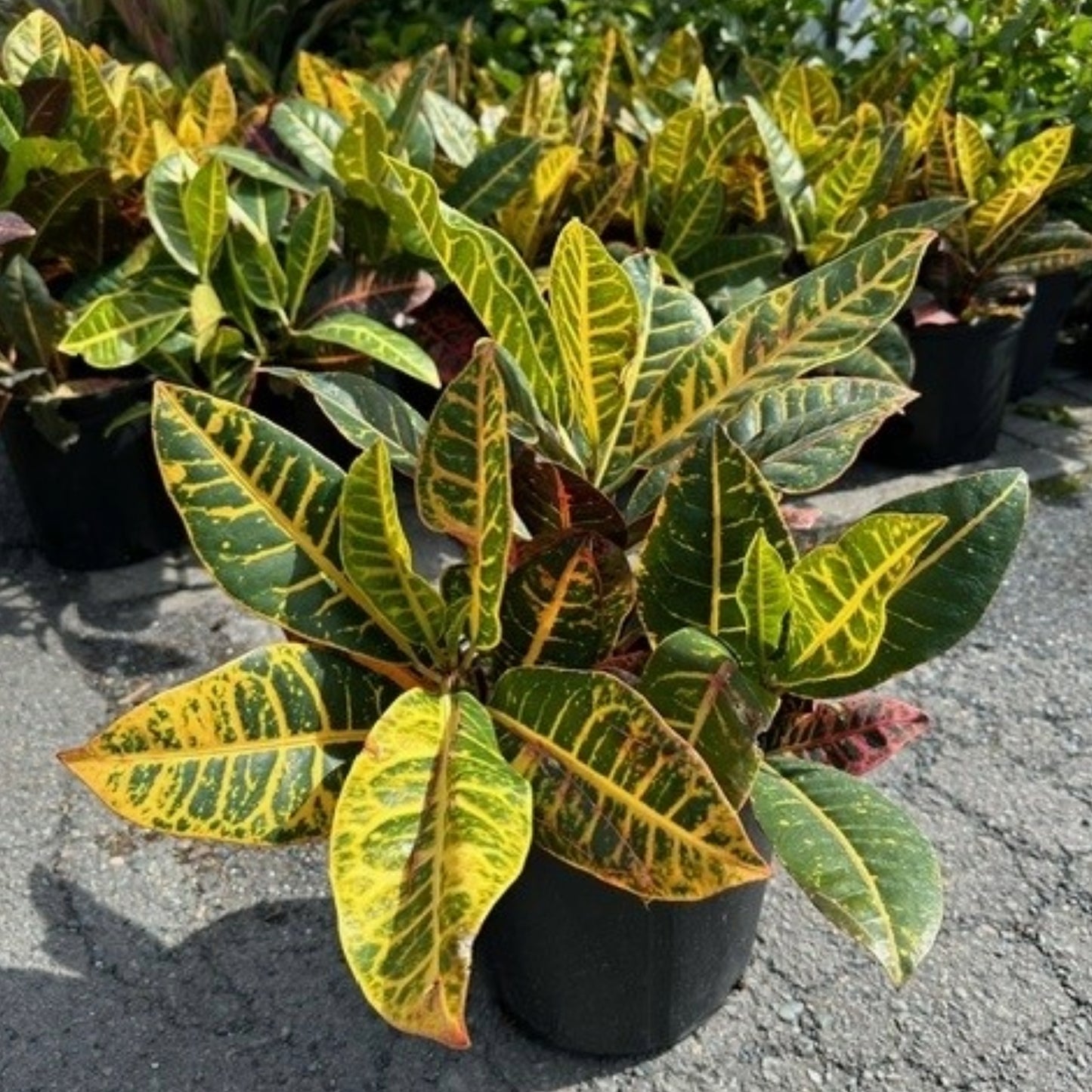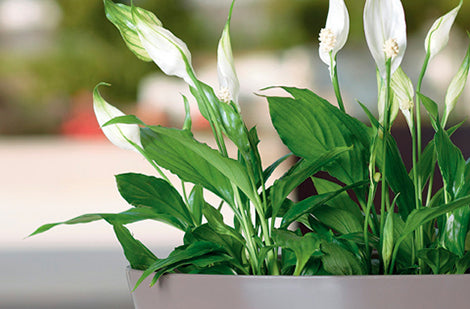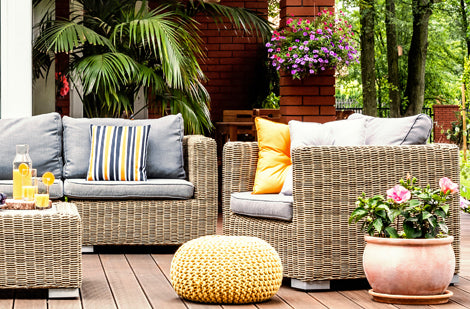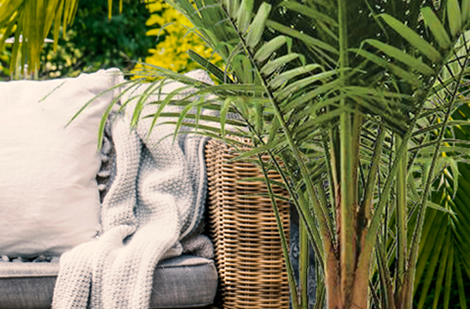Codiaeum variegatum 'Petra'
Codiaeum variegatum 'Petra' – Croton 'Petra'
Codiaeum variegatum 'Petra' – Croton 'Petra'
Exposure
- Bright light without direct sun
Rusticity
- Vibrant multi-coloured foliage
- Eye-catching tropical appeal
- Stunning indoor accent
- Rich, glossy leaves
- A living piece of art
Add an explosion of tropical colours to your living space with the Croton 'Petra', a spectacular plant! Recognized by its lush foliage and vibrant hues of green, yellow, orange, and red, the Croton 'Petra' is a true spectacular botanical display. Ideal for brightening any room, it transforms your environment into a vibrant and exotic oasis, promising a striking visual spectacle.
Characteristics
- Foliage: Large, leathery, glossy, and highly variegated leaves. Colours vary intensely with light, ranging from green to yellow, orange, red, and sometimes even purple or black, often with very prominent veins. The foliage is evergreen.
- Flowering: Small, insignificant, whitish or yellowish flowers, rarely observed in indoor cultivation, as the main interest lies in the foliage.
- Light Requirements: The Croton 'Petra' needs bright light, ideally with direct morning sun. Avoid direct sun in summer. If you place it near a south-facing window, start 2 to 3 meters (6 to 10 feet) away and gradually move it closer. For optimal colouration, aim for at least 5 hours of direct sun per day. If the leaves are dark, move the plant one meter closer to the window. More light means brighter colours.
- Habit: The Croton 'Petra' has an upright and bushy habit, with dense foliage growing from a central stem.
- Growth: Its growth is moderate to fast indoors. It can reach a height of 60 to 150 cm (2 to 5 feet) and a spread of 30 to 90 cm (1 to 3 feet) at maturity, depending on growing conditions.
- Humidity: Requires high ambient humidity. Mist the foliage regularly or place the pot on a tray of moist pebbles. Brown leaf tips indicate a lack of humidity.
- Soil: Prefers a rich, light, and very well-drained potting mix.
- Temperature: Tropical plant, sensitive to cold drafts. Ideal temperatures are between 18 °C and 29 °C (65 °F and 85 °F). Do not expose to temperatures below 15 °C (60 °F).
- Watering: Keep the potting mix consistently moist without waterlogging. Allow the top 2.5 cm (1 inch) of soil to dry out between waterings. Reduce watering in winter.
Usage
- Types of Use: Ideal as an ornamental indoor plant, a focal point in a living room, office, or sunroom. Can be placed outdoors in summer if conditions are warm and humid, but must be brought indoors.
- Decorative Benefits: Its multi-coloured foliage and abundant appearance bring an exotic touch and a burst of vibrant colours, transforming any space into a spectacular botanical display.
Maintenance
- Fertilization: Fertilize monthly from spring to fall with a balanced houseplant fertilizer. Reduce frequency in winter.
- Pruning: Prune in spring to maintain the desired shape, promote denser growth, and remove yellowed or damaged leaves.
- Planting:
- In pots: Choose a pot with good drainage holes. Plant at the same depth as the plant was in its original container. Repot every 1 to 2 years in spring to accommodate its growth.
- Period: Can be planted or repotted any time of year for indoor cultivation. If moving outdoors for summer, do so after all risk of frost, when nighttime temperatures are constantly above 15 °C (60 °F).
Plant details
Dimensions
Dimensions
Characteristics
Characteristics
Habit:
- Bushy
Flowering colours:
Plant needs
Plant needs
Watering:
- Tolerates moist soil
Maintenance:
- Easy
- Fertilize regularly
- Bring indoors in fall
Soil requirement:
Features
Features
Resistance:
Attract:
Use:
Attribute:
- Evergreen foliage



Related articles
-

Potting House Plants: which pot to choose
Read the articleBien qu'une plante puisse passer plusieurs mois et parfois même plusieurs années dans le même pot, avec le temps ses racines envahissent tout l'espace disponible. Il devient important de choisir...
-

Moving Up a Level: Advanced Guide to Repotting ...
Read the articlePropagate your violets! Discover the simple cutting method, the secret to the perfect soil mix, and how to fight mealybugs.
-

The Complete Guide to Buying and Caring for Ind...
Read the articleBringing a touch of nature to your home with plants is a great idea! Not only do they beautify your living space, but they also help purify the air. However,...
-

Build Your Own Terrarium: The Complete, Easy Gu...
Read the articleThe terrarium is the perfect addition to your decor! Learn how to easily create your own miniature garden with our complete guide.
-

Create a garden with succulents
Read the articleLes plantes grasses n’ont pas leur pareil pour créer des arrangements à la fois impressionnants par leurs couleurs, leurs formes et leurs textures et faciles à entretenir. Qu’on les agence...
-

Houseplants to discover - Butterfly Palm or Are...
Read the articleDypsis lutescens, anciennement Chrysalidocarpus lutescens
-

Calathea: The Essential Guide to Mastering the ...
Read the articleCalathea is a stunning addition, but it's demanding! The key to its success? Humidity. Find out why tap water and dry air are its worst enemies and how to give...
-

Jade Plant (Crassula): The Easy-Care Succulent ...
Read the articleThe jade plant is a must-have! Learn all the secrets to caring for this resilient succulent that naturally grows into an elegant miniature tree.
-

Madagascar Dragon Tree: Embrace Effortless, Gra...
Read the articleAdd a modern touch to your home! The Madagascar Dragon Tree is low-maintenance, perfect for beginners, and stands out with its slender look and two-toned foliage.
-

Aspidistra: The "Cast Iron Plant" Indestructibl...
Read the articleDon't have a green thumb? The Cast Iron Plant is for you! Tolerant of shade and missed waterings, it's perfect for lobbies and offices. Learn how to maintain its leathery...
-

Embrace the Fern: The Champion of Shade and Tro...
Read the articleGot a dark corner? Ferns are your allies! They are easy to care for if you master one factor: humidity. Learn how to water them perfectly for spectacular and full...
-

-

Kalanchoe: The Secret to Massive Blooms That La...
Read the articleNeed lasting colour? The Kalanchoe blooms profusely for over two months! An easy succulent that tolerates neglect and adds a vibrant touch to your home.
-

Snake Plant: The Unkillable Houseplant, Perfect...
Read the articleThe Snake Plant is an ideal houseplant for everyone, whether you're a beginner or an experienced gardener. Its resilience, ease of maintenance, and decorative appearance make it an essential choice...
-

Edible Flowers: Top 5 for Garden and Kitchen
Read the articleOffrant une belle gamme de couleurs, de formes et de textures, les fleurs comestibles enthousiasment les amoureux de jardinage et de cuisine.
-

Tropical Flowering Plants: A touch of the exoti...
Read the articleLes plantes tropicales à fleurs ont tout pour faire tourner les têtes! Colorées, odorantes, généreuses, elles n’ont pas leur pareil pour égayer une aide de repos, un balcon, une terrasse....
-

Keep a palm tree on the terrace - why not!
Read the articleDifficile de résister à l’appel des tropiques quand le soleil et les températures clémentes se pointent le bout du nez. Rien de mieux qu’un palmier sur la terrasse ou le...
-

Bring Your Plants Indoors for Winter: The Compl...
Read the articleDon't get caught by the first frost! Prepare your outdoor plants for winter with our complete guide.
-

When and how to repot house plants
Read the articleAlthough a plant can spend several months and sometimes even several years in the same pot, over time its roots invade all the available space.
-

Choosing the best potting soil for your indoor ...
Read the articleDon't let your plants stall: learn how to choose the ideal potting mix and optimize drainage for vibrant foliage.




























